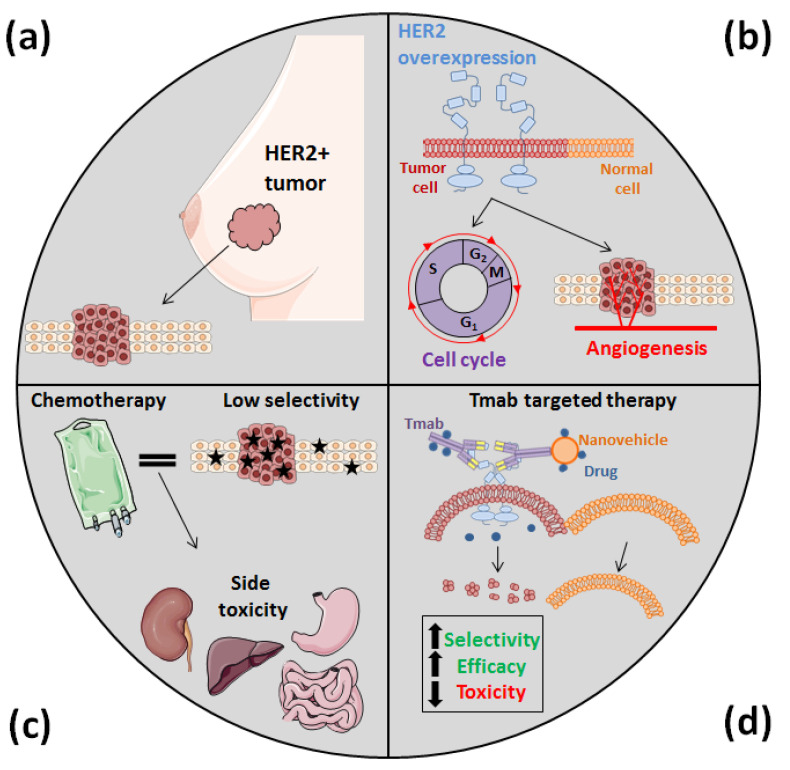Figure 1.
HER2 overexpression, which occurs in almost a fifth of breast cancer cases (a) as well as in other types of solid tumors, is related to cell proliferation and invasion and makes cancer cells more aggressive (b). However, this overexpression has also allowed us to develop novel nanomedicines that are more specific than conventional cytotoxic agents, which often cause acute toxicities (c). In the development of these new nanomedicines, since Tmab specifically recognizes HER2, it has been attached to different types of DDS, improving their efficacy and selectivity and, thus, reducing their side effects (d).

